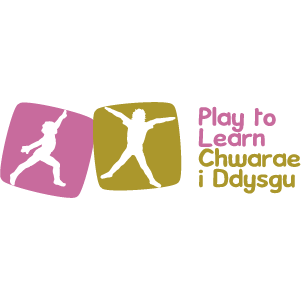
Instructions
Dribbling is controlling a ball using the feet. It requires good foot–eye coordination. Feet perform a series of small kicks and drags to keep the ball travelling along the ground. It is important in rugby and football.
- Dribble the ball with either foot, using inside and outside of feet
- Keep the ball close to body
- Give the ball little taps to move it along
- Keep the head up, looking around
- Use the arms to assist the action
- Keep balanced

Safety
Ensure…
- the balls have smooth surfaces and roll easily to avoid children tripping up
Opportunity to develop
- Co-ordination
- Manipulative skills
- Control
- Accuracy
Physical Development Area of Learning
- contributes to ‘Personal’ and ‘Adventurous If you see… and physical play’ skills sections
If you see
| Observation | Likely Cause | Solution |
|---|---|---|
| Bumps into other | Looking at the feet | Keep head up and look around |
| Ball rolls too far from the child | Kicks, pushes the ball too hard | Make little ‘taps’ of the ball |
| Lose control of the ball | Ball too far from the body | Keep ball close to body |
| Poor balance | No use of arms | Keep arms out for balance |
Can you see?
- the child keeping their head up and looking around?
- the child dribbling the ball with either foot?
- the child maintaining balance?
- the child moving their arms to assist the action?
- the child keeping the ball close to the body?
-
Mostly No
- Walk and dribble soft or partially deflated balls – beach balls / balloons will be easier to dribble
- Take short steps to keep ball close to body and under control
- Pass the stationary ball from foot to foot; roll the ball with the foot, e.g. forward, back, to the side
-
Yes and No
- Dribble along a pathway
- Dribble through wide gates placed within an area
- Dribble in and out of cones
- Dribble around the area; on a whistle the child stops the ball with the foot
-
Mostly Yes
- Dribble along a narrow pathway
- Dribble and change direction
- Dribble around obstacles changing direction
- Roll the ball slowly away, run after the ball and attempt to stop it with foot and then dribble with it
-
Challenge
- Dribble with feet in different directions and at different speeds, then in response to a range of cues
- Dribble with feet following a figure of 8, W, M, square, slalom pathway


